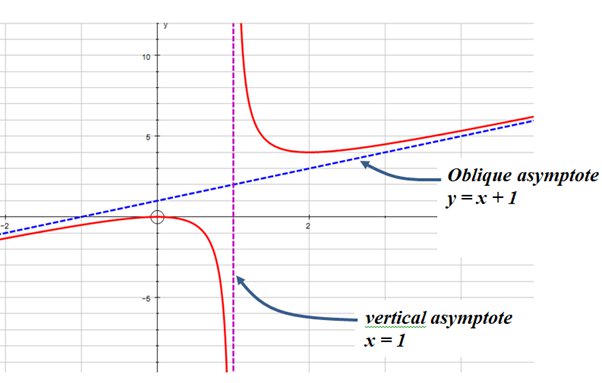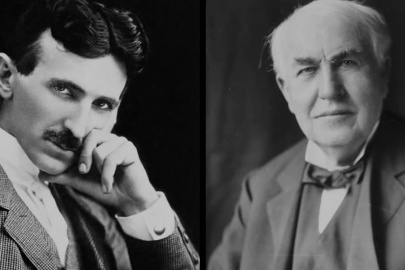The Multiplier Effect of Communication Clarity

How honesty compounds across culture, systems, and scale
Working with clients in brand and design, I keep seeing the same pattern: the teams making the biggest impact aren't necessarily the most technically advanced. They're the ones who've figured out how to be honest about their work—with themselves, with each other, and with the people who matter most.
These aren't companies with bigger marketing budgets or flashier presentations. They're organizations where honesty has become infrastructure—the cultural and operational foundation that makes everything else possible. The way they communicate shapes how they think, how they decide, and how they grow because it's rooted in what's actually true rather than what sounds good.
You can feel the difference when you experience it. It's like that moment when illusion lifts and you see what's actually happening—what various wisdom traditions call the veil being drawn back. Most organizations operate behind layers of dishonest communication: jargon that obscures rather than illuminates, processes that avoid hard truths, messaging that sounds impressive but sidesteps reality.
But here's what I've learned working with these teams: the veil isn't just about complexity. It's about organizations refusing to approach the asymptotic limit of honesty—always getting closer to truth but never quite arriving at perfect transparency.
Like any asymptote, honesty is a direction rather than a destination. We can always move closer to it through courage, reflection, and the willingness to sit with uncomfortable realities. But we'll never reach perfect honesty—our own blind spots, the limitations of language, and the social complexity of relationships ensure that truth remains something we approach rather than achieve.
And that's exactly why it multiplies impact. Organizations that commit to moving along the honesty curve—always approaching greater truthfulness—create entirely different operating conditions than those that settle for "good enough" communication.
Communication isn't a department. It's how organizations move through the world—and honesty is the multiplier that amplifies everything that follows.

Asymptotic Function
A function that approaches a particular value or behavior as its input grows larger (or smaller) but never quite reaches that value. In simpler terms, it gets infinitely close to a line — called an asymptote — without ever touching or crossing it. This concept is often used to describe limits, long-term behavior, or diminishing returns.
The Mathematics of Honesty
My background in mathematics taught me something that applies directly to organizational communication: small changes in initial conditions can create exponentially different outcomes. But what I've discovered working with mission-driven organizations is that honesty functions like an asymptotic curve.
In mathematics, an asymptotic function approaches a limit—always getting closer but never quite arriving. Honesty works the same way. We can always move closer to complete truthfulness through courage, reflection, and the willingness to name what's actually happening. But we'll never reach perfect honesty—our blind spots, the limitations of language, and the complexity of relationships ensure that truth remains something we approach rather than achieve.
Here's why this matters for organizations: those that commit to moving along the honesty curve—always approaching greater truthfulness—operate with a fundamentally different multiplier coefficient than those that settle for "good enough" communication.
In communication, this plays out as what I call the "honesty coefficient." When an organization commits to approaching greater truthfulness—about their challenges, their capabilities, their fears, their aspirations—each interaction builds on increasingly solid ground. Understanding accumulates. Decisions compound. Momentum multiplies.
When organizations avoid the asymptotic pursuit of honesty, the opposite happens. Each euphemism creates distance from reality. Each avoided conversation compounds into larger misalignments. Each comfortable lie cascades into systemic dysfunction.
The mathematical reality is stark: dishonest communication doesn't just create linear problems. It creates exponential drag. Every unclear brief that masks the real challenge requires multiple clarification cycles. Every stakeholder conversation that dances around hard truths needs endless follow-up meetings. Every decision based on what people want to hear rather than what's actually true cascades into more complex problems.
But honesty works exponentially in the positive direction too—like removing stones from a stream and watching the water flow freely again. When communication moves consistently toward greater truthfulness, each interaction amplifies the next. Honest strategy enables honest decisions. Honest decisions create honest execution. Honest execution produces honest results.
This isn't just metaphor. I've watched organizations cut their decision cycles in half, not through better project management, but through systematic commitment to approaching truth more closely. The time savings compound. The energy savings compound. The results compound. The sanity compounds. What was once effortful becomes effortless.
Most organizations treat communication like addition and subtraction—a little better here, a little worse there. But honesty actually works like multiplication and division. Small improvements in truthfulness create disproportionately large improvements in organizational performance.
This is why treating communication as infrastructure matters so much. You're not just improving a process. You're changing the coefficient by which everything else multiplies. You're removing the friction that prevents natural flow, allowing what wants to emerge through honesty to emerge more easily.
Honesty Coefficient—The mathematical multiplier by which an organization's commitment to truthfulness amplifies all other operational outcomes.
The Honesty Coefficient measures how consistently an organization approaches greater truthfulness in its internal and external communications. Organizations with a high Honesty Coefficient experience exponential improvements in decision-making speed, stakeholder alignment, and operational efficiency because each interaction builds on increasingly solid ground.
Where Clarity Creates Leverage
Internal Culture
Clear organizations move differently internally, but not just because they have better processes. They move differently because clarity creates the conditions for honest conversation.
When teams can articulate their core innovation in terms everyone understands, something deeper happens than just alignment. People feel safe naming what's actually happening instead of dancing around problems with corporate speak.
I've seen this shift teams completely. Less back-and-forth in meetings because everyone understands both the objective and feels comfortable saying when they don't. Less rework because the brief was clear from the start and people felt safe asking clarifying questions. Less politics because the shared vision is bigger than individual agendas and more compelling than office drama.
This cultural multiplier effect happens because clarity isn't just about information architecture. It's about creating space for truth to be spoken and heard. When communication systems are designed from the inside out—starting with honest assessment of where you actually are—teams operate from a place of trust rather than defensiveness.
Stakeholder Magnetism
Clear organizations attract what they need without having to chase it, as if they've aligned with some natural current rather than swimming against it.
The right investors find them. Talented people apply. Strategic partners reach out first.
This happens because when you can explain your work in ways that connect with different audiences, you stop having to convince people your innovation matters. They see it themselves. They feel the opportunity. They want to be part of something that feels both meaningful and clear about its direction.
There's something almost gravitational about organizations that have found their center and can communicate from that centered place.
Scaling Systems
Clear organizations scale more smoothly because their communication is built on what I call "systematic clarity"—frameworks that can handle increasing complexity without breaking down.
This connects directly to systems thinking: when you design communication from the inside out, starting with core purpose and building outward through stakeholder needs, you create adaptable architecture rather than brittle messaging.
They don't rebuild their story every time they enter a new market because their communication system is designed to accommodate new contexts while maintaining core coherence. The underlying clarity framework scales while staying true to the essential innovation.
This systematic approach to communication is what separates organizations that scale smoothly from those that reinvent themselves every six months.

War of the Currents
History teaches us something uncomfortable: technical superiority doesn't guarantee impact. Communication clarity often matters more than technological advancement.
Consider the "War of the Currents" in the 1880s.¹ Nikola Tesla had developed alternating current (AC) technology that was objectively superior to Thomas Edison's direct current (DC) system. AC could transmit electricity over long distances with minimal power loss, making it far more practical for widespread electrical infrastructure. Tesla's technology was the clear winner from an engineering perspective.
But Edison was a master communicator. He understood that people feared electricity, so he focused his messaging on safety and familiarity. He demonstrated DC's "gentleness" and staged dramatic (and gruesome) public demonstrations showing AC's dangers—including the development of the electric chair to associate AC with death.²
Tesla, brilliant as he was, struggled to explain why AC's technical advantages mattered to the people who would ultimately decide which system to adopt. His communications were dense, technical, and focused on the engineering rather than the human benefits.
The result? Edison's inferior technology nearly won through superior storytelling. Only when George Westinghouse partnered with Tesla and provided the communication clarity Tesla lacked did AC eventually prevail.³
This pattern repeats throughout history: ideas don't breakthrough on their own. They breakthrough when they can be communicated in ways that create understanding, trust, and urgency for the right people at the right time.
Organizations working on meaningful innovations today face the same choice Tesla faced: assume your technical superiority will speak for itself, or invest in the clarity that helps people understand why your work matters.
How Clarity Compounds
This multiplication doesn't happen overnight. It builds in waves, and honestly, it's less formulaic than most business advice suggests.
First, internal friction decreases—like removing sand from gears. Meetings get shorter because everyone's aligned on what needs to happen. Decisions come faster because the criteria are clear. Teams execute more smoothly because they understand both what they're building and why it matters.
Then external momentum builds. The right talent starts finding you because they can sense what you're about. Partnership discussions accelerate because potential collaborators understand how they fit. Market positioning sharpens because your message resonates with the people who matter most.
Eventually, you're operating in an entirely different league. You’ve become the A-team. Your problems become the good ones to solve—how to scale impact, which opportunities to prioritize, how to maintain culture while growing. The kinds of challenges that indicate flow rather than struggle.
The organizations that understand this invest in clarity systematically, not as an afterthought when something's broken.
The Real Investment
Most organizations approach communication backward. They wait for problems—confused stakeholders, stalled growth, internal misalignment—then try to fix them with tactics.
Leading organizations treat communication as infrastructure, investing in strategic clarity the way they invest in R&D or technical talent. As foundation that everything else builds on.
This means starting with honest assessment. Where are you actually? Not where you wish you were or where your latest presentation claims you are.
Can your team articulate your core innovation consistently? Do different stakeholders understand why your work matters to them specifically? Are your growth plans supported by communication that can scale with you? Is your messaging built on strategy or just accumulated reactions?
The investment isn't about hiring more marketing people or redesigning websites. It's about building systematic approaches to the communication challenges every impactful organization faces.
Frameworks for different audiences. Processes for maintaining consistency as you grow. Systems that evolve with your work instead of constraining it.
Organizations that approach this systematically don't just communicate better, they operate with a fundamentally different honesty coefficient. They grow more efficiently because their communication infrastructure accelerates rather than constrains. They attract what they need more easily because their truthfulness creates magnetic pull rather than requiring push.
Honest communication becomes the mathematical multiplier that makes everything else possible.
What Actually Gets Multiplied
For organizations working on meaningful innovations, clarity isn't about making complex things simple. It's about making important work accessible to the people who need to understand it.
When you can communicate your innovation in ways that create understanding rather than confusion, trust rather than skepticism, engagement rather than indifference, everything compounds.
Your best people stay and perform better. The right opportunities find you faster. Growth happens with less internal friction. Your work reaches the people who can most benefit from it.
That's the multiplier effect, and it's available to any organization willing to invest in getting clear about what matters most.
The question isn't whether clear communication would help your work. Of course it would. The question is whether you're ready to treat it as infrastructure rather than afterthought.
Looking to understand how clarity could multiply impact in your work? Start with honest assessment of where communication helps or hinders what you're trying to build. The foundation you create today becomes the leverage point for everything that follows.
References:
¹ Jonnes, Jill. Empires of Light: Edison, Tesla, Westinghouse, and the Race to Electrify the World. Random House, 2003.
² Essig, Mark. Edison and the Electric Chair: A Story of Light and Death. Walker & Company, 2003.
³ Carlson, W. Bernard. Tesla: Inventor of the Electrical Age. Princeton University Press, 2013.
